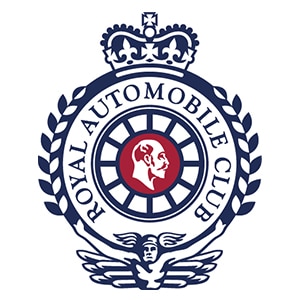Latest News
The growth of competitive socialising: A new era of leisure and experiences
2nd January 2025

In recent years, a noticeable trend has reshaped the social landscape: competitive socialising. This popular concept combines new forms of leisure activities and entertainment with the joy of spending quality time with family and friends, creating new and dynamic experiences.
What is competitive socialising?
It involves competitive activities that can be enjoyed by participants. It’s a modern twist on traditional social activities and games that embeds challenges, encourages friendly rivalry, and typically takes place in purpose-built venues designed for an energetic and engaging atmosphere.
While the idea of competitive socialising isn’t new, classic leisure activities, such as tenpin bowling, mini golf, and pool have long been staples for groups of people. However, today’s choices are far more varied and unique. Some of the most popular options, include:
- Axe throwing
- Pétanque
- Shuffleboard
- Escape rooms
- Digital darts
- Golf simulators
- Cricket cages
- Clay shooting
- Football themed games (TOCA Social)
- Virtual driving simulators (F1 Arcade)
- VR/AR rooms
- Bingo
There are also versions of popular gameshows and board games, such as The Cube, The Cystal Maze, and Monopoly Lifesized. Many of these traditional games have been upgraded with modern technology to enhance the user experience and make it accessible for all types of people and groups.
The influence of social media
Social media plays a major role in shaping the design of competitive socialising venues. People are keen to share their experiences online and create those “instagrammable” moments. From stylish interiors, themed-cocktails, or street food offerings, most if not all competitive socialising activities and venues will have a visual appeal that can be captured and shared online. This also helps drive awareness and increase the popularity of these activities for businesses and brands.
Changing cultural trends
The growth in the competitive socialising market has been a tremendous success story for the hospitality and leisure industry. A shift in attitudes towards alcohol, particularly among younger generations, has driven the popularity of competitive socialising. Many people are now looking for entertainment and leisure that doesn’t revolve around alcohol. This is where competitive socialising has an inclusive edge over traditional venues like nightclubs, where attendances have dropped, and long-standing venues continue to close.
Interestingly, while nightclubs have struggled, music festivals remain popular as ever due to their unique experiences and variety of offerings beyond music acts (street food, games, pop-up shops, funfair installations). Once again, this provides ample opportunity for festival goers to “capture the moment” and create social media-friendly moments.
The importance of food and drink
An onsite food and beverage offering is essential for competitive socialising venues. Themed menus, such as those found at F1 Arcade, or visually appealing dishes attract customers, increase spending, and encourage longer visits. They also appeal to a social media-savvy crowd helping to boost popularity of venues.
Food and beverage should not be considered an afterthought – the revenue generated from food and drink can often exceed the returns generated from the activity itself.
The impact of the pandemic
The post-lockdown desire for social interaction has played a big part in the growth of competitive socialising. Additionally, with more people working remotely since the pandemic, hybrid working patterns has shifted the traditional Friday night out. Midweek evenings, such as Tuesday, Wednesday, and Thursday are now the busiest times for competitive socialising.
Boosting commercial spaces
Competitive socialising has greatly benefitted commercial real estate landlords. With the much talked about decline of the British High Street, these businesses are now occupying vacant spaces and bringing new life and footfall to shopping centres and retail parks. Many competitive socialising venues are now seen as key tenants, revitalising previously underused or empty properties.
Pioneers in this sector, like Swingers Crazy Golf, initially used temporary pop-up spaces to test their concept. They took advantage of short-term leases in properties awaiting renovation or demolition as a low-cost barrier to entry into this marketplace.
Why is competitive socialising so appealing?
- Social connection
In a world where digital interaction is widespread, competitive socialising encourages face-to-face communication and engagement, helping people to foster deeper connections and connect through shared activity.
- Stress relief
Competitive activities provide a fun way to relax and unwind, offering a break from daily stresses.
- Inclusivity
Activities are accessible to people of all skill levels. Many venues cater to beginners, ensuring everyone can join in and enjoy the experience.
- Memorable experiences
The combination of competition and social interaction creates lasting memories. Whether it’s victory or laughing over a near miss, these moments often become stories shared among friends and family.
The future of competitive socialising
The future looks bright for competitive socialising. With new concepts and technologies likely to emerge, venues and brands will continue to evolve, offering fresh experiences to keep customers engaged. However, as more and more businesses enter the sector, there is a risk of saturating the market. Both new and established brands will have to play smart and be strategic to remain successful.
Author:



























